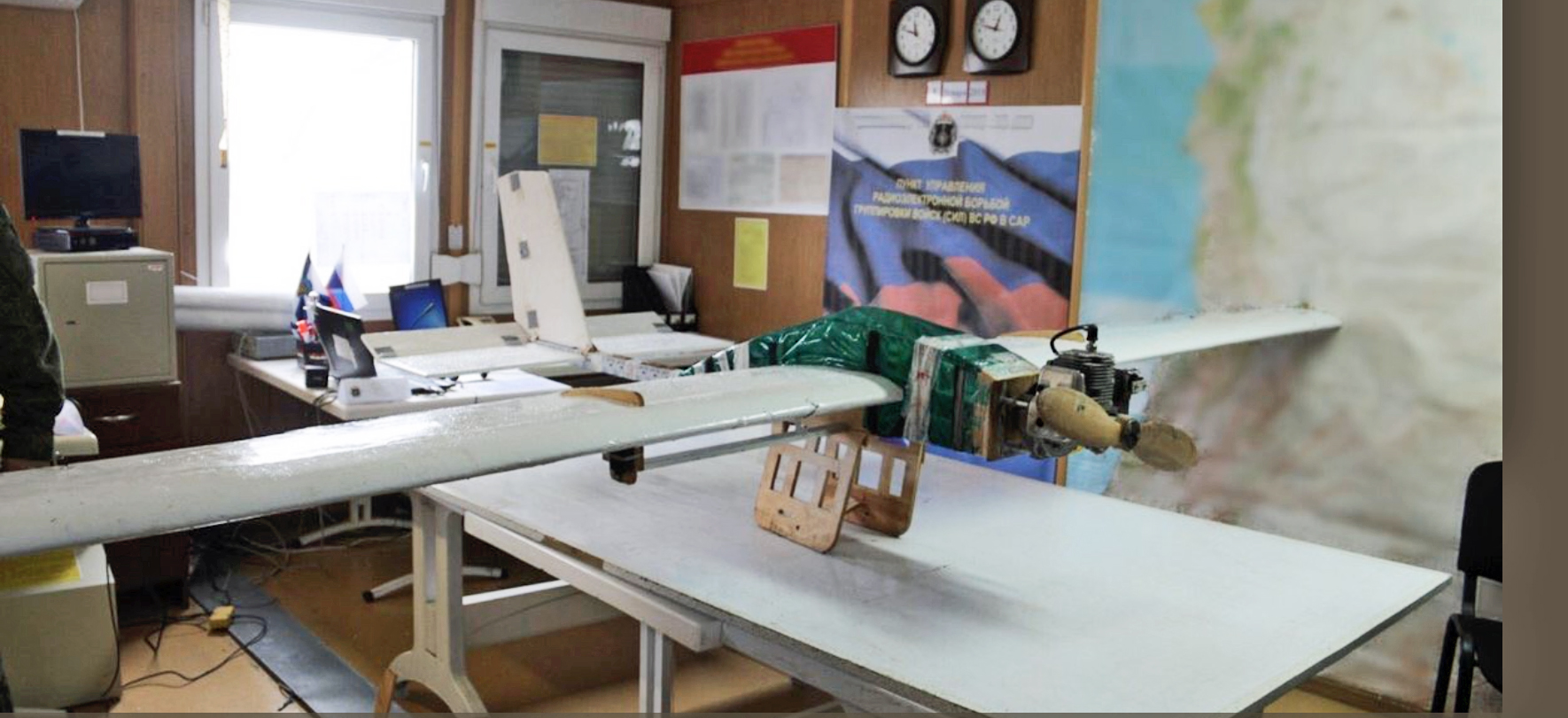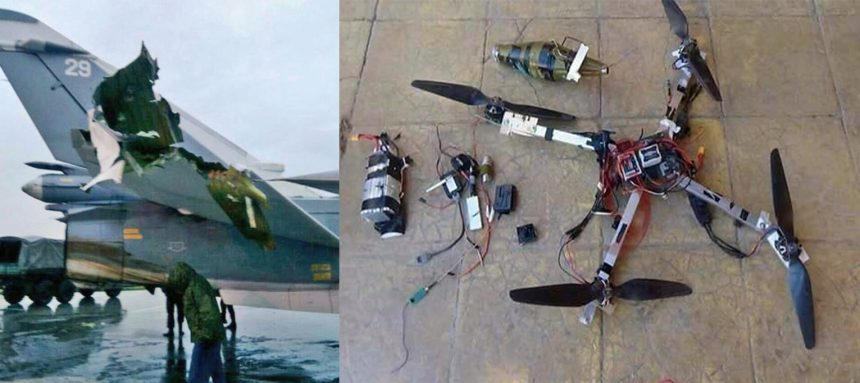One Aircraft Heavily Damaged in Most Recent in String of Low-Cost Insurgent Drone Attacks.
It is the definition of asymmetrical warfare: a fast-moving, lightly armed insurgency fueled by a radical doctrine uses simple weapons to attack a larger, seemingly more capable occupying force.
Taking inspiration from the doctrines of T.E. Lawrence, Sun Tzu, Che Guevara and Ho Chi Minh, extremists in Syria have increased pressure on Russian forces in the region with another simple, innovative attack that heavily damaged at least one Russian aircraft and likely more. Previous similar attacks in the region around January 4 were reported to have killed 2 Russian servicemen.
Recent photos surfacing on social media attributed to Russian military journalist Roman Saponkov show the tail of what appears to be a Sukhoi Su-24 Fencer attack aircraft damaged by an attack earlier this month.

A report that surfaced on January 6, 2018 from the Syrian Observatory for Human Rights that was shared in several media outlets including the BBC says that Russian forces shot down several “unmanned aircraft” near Hmeimim base near the north-western city of Latakia on Saturday in what appears to be the latest attack attempt by insurgents. In this week’s latest attack the Russians claim there was no damage to aircraft or personnel and their air defense systems were successful in intercepting the small, store-bought quadcopter drones usually used for cameras.
There has been a recent increase in attacks by improvised air-delivered weapons from remotely piloted aircraft on Russian installations in Syria. Additional insurgent attacks have been attributed to mortars. Some of the remotely piloted aircraft, in some instances commercial style quad-copter drones, have been modified to carry mortar rounds or grenades. Some grenade-bombs even used badminton shuttle cocks for improvised tail fin stabilizers. While this is not new, the frequency of the incidents and adaptability of the insurgents does seem to have increased.

This increase in insurgent attacks comes just after Russian President Vladimir Putin announced the withdrawal of the bulk of Russian assets from Syria during a surprise visit to Hmeimim air base on December 11, 2017. Hmeimim air base is the primary launch facility for Russian tactical air operations in Syria’s Latakia province. The political move by Putin is reminiscent of the May 1, 2003 political gaff by then- U.S. President George W. Bush. President Bush made a media event out of landing on the aircraft carrier USS Abraham Lincoln (CVN-72) and speaking in front of a banner that read “Mission Accomplished”, acknowledging the progress of the U.S. in the Global War on Terror in Iraq. Although Bush never said the mission was accomplished in his remarks on the USS America, the event is historically regarded as premature to meaningful change in the ongoing Iraq conflict. Putin may face similar criticism if a meaningful victory in Syria does not happen soon.
The Russian success in intercepting improvised camera drones being adapted to carry weapons is at least partially attributable to what may be their most sophisticated air defense system, the Pantsir S-2 integrated missile and gun vehicle.

The Pantsir S-2, an advancement from the earlier Pantsir S-1, uses a combination of a high rate of fire anti-aircraft gun and surface to air missiles combined with advanced targeting radar to both detect aerial threats and target both the guns and the missiles on the Pantsir S-2.
Pantsir S-2 is armed with two 2A38M, 30mm automatic anti-aircraft guns derived from the GSh-30 twin-barrel 30mm aircraft-mounted cannon. The cannon system on the Pantsir S-2 has a very high rate of fire from 1,950 to 2,500 rounds per minute depending on the length of the burst. The 2A38M cannon can engage targets up to 2,000 meters, over 6,000 feet, altitude. More importantly in the context of the improvised insurgent threats, the 2A38M can engage targets down to zero altitude effectively, a problem older Soviet-era Russian anti-aircraft systems like the ZSU-34-4 faced since the guns could not depress below a certain elevation making it impossible to hit very low altitude targets in close proximity.
The Pantsir S-2 also carries the new highly capable 57E6-E guided surface to air missile. The missile uses a bi-caliber body in tandem, one stage in front of the next, with a separate booster stage then in-flight stage. The newest versions of the 57E6-E are reported to have range of up to 20-30 kilometers with and reported engagement ceiling of 10,000 meters (approx. 33,000 feet).
While the new Pantsir S-2 provides significant protection from what appears to be the entire threat envelope from enemy fixed wing aircraft to improvised quad-copter bombs the hallmark of the insurgent adversary is adaptability. While Russia appears to be emerging in the lead of the conflict in Syria as Putin announces their withdrawal, one has to wonder what shift in insurgent tactics will follow their drone attack campaign.









